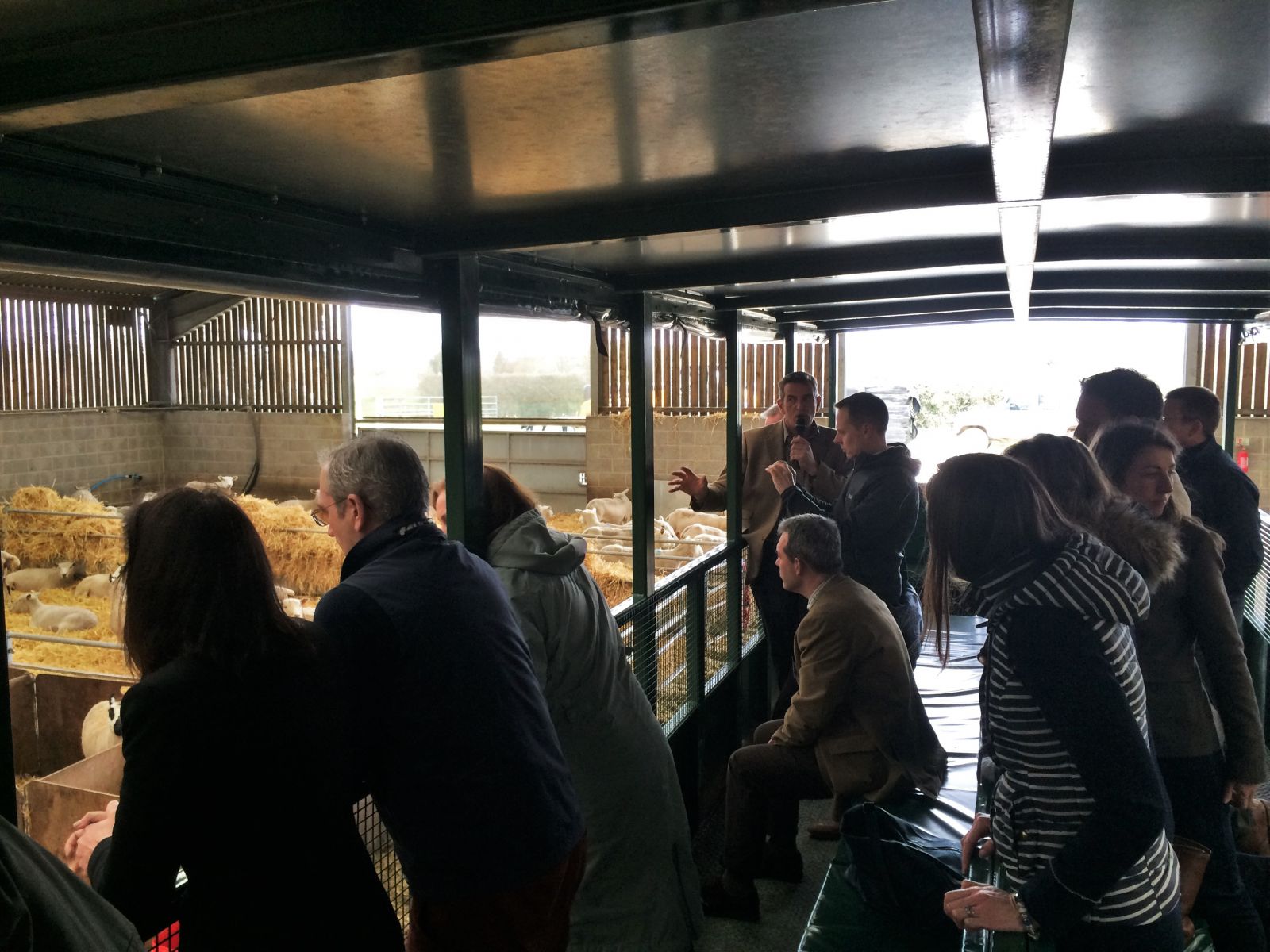A look inside the organic meat market
Now growing at over 7% year-on-year, the organic market has entered its fifth consecutive year of steady growth. Organic meat has also grown over the last decade, but if we’re honest, its fortunes have been a little more mixed…
When I organised the Soil Association Certification’s first ever Organic Meat Forum in late 2015, organic meat in supermarkets was just edging into growth, following a difficult post-recessionary few years I’d rather forget. Since then, despite some ups and downs, I’ve been keeping a vigil on supermarket sales data and I’m pleased to say that it’s at least remained steady.
Whilst that might not sound very impressive, there’s an expression you’ll hear in food retail today; “flat is the new growth.” In other words: be grateful you’re still afloat. Consider that the non-organic meat has been in overall value decline during this same period and perhaps you’ll also argue organic meat has done well to hold its own.
Opportunities for growth
If I want to feel more positive, I look at what we at the Soil Association call certified sales declarations. These are the number gathered from Soil Association meat, fish and poultry licensees and they tell me is that whilst growth may not be evident in the multiples, there’s certainly evidence of it elsewhere. Where? Well certainly in independent retail and mail order, but also in some exciting new areas too, which I’ll come to in a moment.
I’ve long believed that the Soil Association has an important role to play in supporting growth of the organic market. We do some excellent consumer marketing and our business development work is as impactful as it is diverse. Getting key stakeholders together in the same room is an important part of this.
Back in March we held our third Organic Meat Forum at Daylesford’s Organic Farm in Gloucestershire, which saw the best attendance yet and some lively debate. I have to admit to initially wondering how well these sessions might go down, given the diversity of stakeholders. But in the end these meetings have proved an invaluable opportunity for insight sharing, getting us closer to a sector consensus on what’s preventing growth and which doors could be starting to open for organic.

Participants in the 2017 Meat Forum held at Daylesford being shown round the barn housing the sheep
These events enable much networking too, time to reflect on information shared and consider who you should now start talking to. Whether steadying myself on a wobbly tractor trailer, or ambling through an organic pasture, it’s always satisfying to see how simply getting people out on a farm inspires and enables networking. Give people a bit of space away from the office, food for thought (and preferably some actual food) and the business being developed in front of you is almost palpable.
Farmer challenges
Despite all this collaboration, with Brexit, rapidly changing consumer habits and food deflation, we live in interesting times and the meat industry is facing its fair share of challenges. Just to make things even tougher, some of these challenges can be counter to the macro trends. As one farmer recently reminded me, organic producers face higher costs for things like organic feed, so when the non-organic beef price starts to catch up with organic, the incentive for farmers to stick with organic naturally decreases. This means unwanted turbulence in supply and demand, which in a smaller organic market can really rock the boat.
I’m left wondering if we’ll start to see price inflation in the organic market in the coming year. This might be accompanied by increased retailer focus on own-label – an area where innovation isn’t as evident. This is a concern, given how innovative many of these forum attendees clearly are.
Meat Forum highlights
Each of our Forums has one presentation that stands out and for me the contribution from Jean-Pierre Garnier at our Daylesford event struck a chord with many. A personable Frenchman and expert on UK meat export from the Agriculture, Horticulture and Dairy Board, Jean-Pierre opened our eyes to a wealth of possibilities. Asia in particular is showing a huge interest in our UK offer and the US who can’t get enough of our antibiotic-free pork. Spain wants our organic beef and a staggering 50% of our organic pork now heads to Germany.
This rising demand for organic meat across the EU is certainly pricking-up ears, but supply could be the limiting factor. As J.P reminded us, customers overseas want lamb 365 days a year, not just seasonally and potential exporters are traditionally linked to UK retailers, so ironically it could be hard to achieve the critical mass needed without the retail commitment to organic we see on the continent.
Diversification of markets also presents a potential solution to the challenge of balancing supply, a problem for the smaller and medium sized players in organic meat, who often tell me how they can’t afford to see the lower-value cuts consigned to the non-organic supply chains. Foodservice is a great way to find a route for lower value organic cuts, an opportunity another speaker at our forum has identified.
Since joining our Food for Life Supplier Scheme, beef from Rhug Estates meat has been finding its way into some of the 20,000 meals served by Tower Hamlets schools, who hold the Food for Life Catering Mark Award for their menus. These organic producers from Snowdonia have seen a 7% increase in sales as a result of this new opportunity. But perhaps more satisfying still; children from this challenging London borough, potential organic consumers of future, are now getting out to the farm, to see where their food comes from. This is yet another example of the virtuous circle I so often see in the organic world.
There is undoubtedly a growing trend for people to eat less meat, which I’m not going to disagree with, but when we do eat meat, surely all the better if it’s from more sustainable and higher welfare systems such as organic? As the Food Climate Research Network acknowledges, there are important reasons for maintaining the existing grasslands that feed many of our organic cattle, both as carbon stores and for their role in maintaining biodiversity. We all agreed at the Daylesford forum that we need to work harder to get this message across to consumers.
As I drove away from the inspirational Daylesford Organic Farm that day, having again met a group of businesses clearly dedicated to the pursuit of quality and reduction of impact, I’m even more determined to support these businesses and help them grow. I want to ensure they are rewarded for the pioneering work they do, whichever market they choose to explore.
Lee Holdstock has worked with the Soil Association since 1999. He writes:
“I’ve spent more than 16 years advocating organic methods and supporting organic businesses. A graduate specialising in plant ecology, it was initially the wildlife benefits that drew me to the organic movement. I’ve had the privilege over many years to meet some of the most inspiring people in UK food and agriculture, experiencing first-hand the many and varied ways in which organic farming can make a difference to the health of people and planet. With an organic market growing into uncertain times, I’ve recently taken on a Supply Chain Development role, which allows me to focus on developing organic within new channels such as export and foodservice. When I’m not doing this, you’ll find me either digging up my allotment in north Bristol, or shredding up the Welsh trails on my mountain bike.”
Learn more:
- View footage of the Meat Forum held at Daylesford here.
You can find various resources, farmer profiles and blog articles on Agricology that explore the meat market and some of the points Lee touches on. Have a look at:
- ‘Organic versus non-organic: Meat’- research that highlights nutritional benefits of organic meat, with important links made to livestock feeding regimes.
- Richard Smith‘s farmer profile for Daylesford Organic Farm
- Jonty & Mel Brunyee of Conygree Farm profile (who promote the ‘Pasture Fed’ ethos)
- Liz Bowles’ blog ‘The role of livestock in meeting emission targets and keeping carbon in the soil‘
- Video footage of Patrick Holden’s talk on ‘The Future of Food‘
- ‘Sustainability toolkit for organic businesses‘ – a guide designed to help you improve the profitability, sustainability and environmental performance of your business.
- ‘The Complementary Role of Sheep in Upland and Hill Areas’ – a report by the National Sheep Association that emphasises the importance of supporting British farmers and puts forward the benefits of consumption of red meat.
- ‘A Breath of Fresh Air ‘– a report looking at pasture-based versus intensive grain-fed beef production – which is more environmentally sustainable?
- ‘The Grassfed Primer’ – a booklet offering solutions that grassfed farming can offer in relation to animal health and welfare, human health and environmental concerns.


